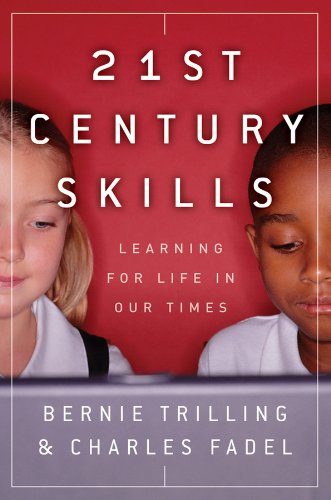We may earn a commission if you click on a product link and make a purchase at no additional cost to you. For more information, please see our disclosure policy.
Last Updated on March 21, 2025
Three decades ago, adult learning primarily entailed attending local
What This Article Covers
- The Advantages of Online Learning: Discover how digital education provides flexibility, accessibility, and cost-effective learning options for personal and professional growth.
- How Online Learning Saves Money: Learn how virtual courses reduce tuition costs, eliminate travel
expenses , and makehigher education more affordable. - Expanding Career Opportunities: Explore how online courses allow learners to access top educators and career-changing programs without relocating.
- Networking Through Digital Classrooms: Understand the importance of virtual networking and how online courses help connect students with industry professionals and mentors.
- Building In-Demand Technical
Skills : See how online education enables learners to develop sought-afterskills like coding, data analysis, and digital communication. - Employer-Sponsored Online Learning: Find out how some companies support employee growth by offering tuition reimbursement for online courses.
The Benefits of Online Learning
- Flexibility: Learn at your own pace, with the ability to fit classes around your schedule.
- Accessibility: Attend courses from anywhere with an internet connection, eliminating geographic barriers.
- Cost-effective: Online programs often cost less than traditional education, reducing financial burdens.
- Diverse course offerings: Access various institutions’ subjects, disciplines, and skill sets.
- Personalized learning: Tailor your learning experience to suit your individual needs and preferences.
- Networking opportunities: Connect with students and professionals worldwide, enhancing your global network.
- Skill development: Improve time management, self-discipline, and digital literacy while learning online.
- Immediate feedback: Receive real-time evaluations and automated feedback on quizzes and assignments.
- Adaptive learning: Benefit from AI-driven systems that adjust content based on your performance and learning style.
- Environmental benefits: Reduced need for travel and physical resources contributes to a greener, more sustainable education model.
Build the real-world skills you need to stand out to employers hiring for entry-level roles with Chegg Skills. Select a career path below to access exclusive internships and gain real-world skills. Students who add top skills to their resume are 3x more likely to hear back from potential employers
Saves Money
Online learning helps you save money on education. By leveraging classes online, you’ll pay fewer fees and often get opportunities for more affordable classes. An instructor is no longer limited by the number of seats in his or her class. Instead, they can post their classes online and teach in a new format. Using online
Broadens Your Opportunities
If you live on the West Coast and long to take a course from a renowned scientist on the East Coast, technology and online learning make this possible. You no longer need to relocate to get the best education. Many top-level professors offer courses online. All you need to do is sign up through the university.
Online biology courses and history courses, for example, are more affordable when taught this way. You don’t need to consider moving costs, living on a new campus, or quitting your job. You can even try new things because you are not limited to your current degree.
Ready to reimagine your career?
Get the skills and real-world experience employers want with Career Accelerators.
Network With Others
When changing careers significantly, you want a new network of professionals. These individuals can help you connect with new opportunities and other people in the new industry. Online courses often include some forum just for that class. These forums provide a fantastic way to meet study partners you can video chat with and professionals in the new field. Networking is a critical part of changing careers. Don’t skip over this vital piece when you’re taking online classes.
Flexible Study Times
Online courses offer the freedom to learn without being confined to a specific time slot. You can engage with lessons from the comfort of your home, during work breaks, or wherever possible. This adaptability enables you to balance learning with your other commitments. Allocate study time in the mornings, weekends, or afternoons before dinner. By adopting effective time management practices, this flexibility can facilitate the acquisition and development of new
Gain New Technical Skills
Being a valuable employee entails possessing at least one highly sought-after skill, with technical
Online courses enable you to refine written communication, condense complex subjects, and develop universally applicable
Some Employers Pay for Online Classes
One of the benefits that many employers provide is continuing education. Many employers will pay back a specific dollar amount per year of continued coursework. While some employers require the classes to be directly related to a current job title, others will pay for courses in other areas, especially if they hire people with those
Next Steps
- Identify Your Learning Goals: Define what
skills or knowledge you want to gain, whether for career advancement, a job change, or personal development. - Choose the Right Platform: Research top online learning platforms like Coursera, Udemy, or LinkedIn Learning to find courses that align with your goals and
budget . - Create a Study Schedule: Set aside dedicated time for learning each week, ensuring you stay consistent and progress steadily.
- Engage with Online Communities: Join discussion forums, LinkedIn groups, or course-specific networks to connect with peers and industry professionals.
- Apply Your Knowledge: Reinforce what you’ve learned by working on real-world projects, adding certifications to
your resume , or leveraging newskills in your current job.
Final Words
Online learning offers a flexible and accessible way to gain new
21st Century Skills: Learning for Life in Our Times explores the essential skills needed to thrive in today’s dynamic, technology-driven, and global economy.
Related posts:
Joey Trebif is the pen name of Mark Fiebert, a former finance executive who hired and managed dozens of professionals during his 30-plus-year career. He now shares expert job search, resume, and career advice on CareerAlley.com.




